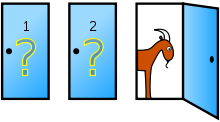Edited, memorised or added to reading queue
on 25-Sep-2022 (Sun)
Do you want BuboFlash to help you learning these things? Click here to log in or create user.
| status | not read | reprioritisations | ||
|---|---|---|---|---|
| last reprioritisation on | suggested re-reading day | |||
| started reading on | finished reading on |
Unknown title
nfamiliar with CFAR/LW, with a quick 'getting started' guide. It is not intended to be a complete account nor thoroughly researched. For a more data-driven account, see this post by Kaj_Sotala. <span>Trigger-Action Planning is a technique for changing and creating habits that are totally automatic and don't require conscious thought. The basic idea is that you tie the habit to a specific, simple, concrete thing that activates the 'do this habit' program in your brain. trigger - The simple, specific sight/sound/smell/thought/feeling/etc. which you hook a behaviour onto. action - The behaviour you enact on contact with the trigger. plan - A deliberate
| status | not read | reprioritisations | ||
|---|---|---|---|---|
| last reprioritisation on | suggested re-reading day | |||
| started reading on | finished reading on |
Unknown title
e totally automatic and don't require conscious thought. The basic idea is that you tie the habit to a specific, simple, concrete thing that activates the 'do this habit' program in your brain. <span>trigger - The simple, specific sight/sound/smell/thought/feeling/etc. which you hook a behaviour onto. action - The behaviour you enact on contact with the trigger. plan - A deliberate plan to create the above pattern of trigger-action. pattern - A pattern of trigger-action, whether deliberate or not, sometimes created unconsciously. (TAP can mean either Trigger-Action Plan or Trigger-Action Pattern.) Automatic Habits It's far easier to change habits when you don't need to think about them. If we try to use our slow, conscious thinking to do a desired habit, it's effortful, we often
| status | not read | reprioritisations | ||
|---|---|---|---|---|
| last reprioritisation on | suggested re-reading day | |||
| started reading on | finished reading on |
Unknown title
actually doing them effortless and reliable. Fortunately, human thinking appears to be designed for this kind of automation. (For more on this, see Thinking, Fast and Slow by Daniel Kahneman.) <span>Trigger-action patterns occur naturally in everyday life. They can be useful, such as [Finish lathering hair → wash shampoo out] or [Close front door → lock door], or they can be detrimental, such as [Feel restless → comfort-eat]. Understanding how they work means you can intervene and break undesirable patterns, or create your own patterns. Creating a TAP 1. Pick a goal. A desired habit or behaviour change. Usually, we make TAPs in order to move the needle a little, or give a pause to remember the desired behaviour, rather
| status | not read | reprioritisations | ||
|---|---|---|---|---|
| last reprioritisation on | suggested re-reading day | |||
| started reading on | finished reading on |
Unknown title
ake some training. Simple, modest goals are easiest to start with. E.g. "drink more water", "get out of bed earlier", "remember to floss", "do a few push-ups every day", etc. 2. Find a trigger. <span>Properties of a trigger: Unique - Triggers must always be followed by the action, or else the TAP breaks. (Because if there are exceptions, that means you then have to think about whether to do the action, instead of it being your automatic default.) Appropriate - Are there any situations where the trigger comes up and you wouldn't want to do the action? If so, make the TAP simpler so that the action is always appropriate, or attach it to a different trigger. Non-vague - Actions need a specific, concrete trigger to hook into. (Imagine trying to hook jello: it'd just go *whubble*. So make your trigger solid!) Actually happens - If it's rare, the TAP might not stick. If the trigger doesn't come up when you want to do the change of behaviour, or only does sometimes, try to find a trigger that a) comes up in all situations where you want to do the habit, and b) comes up in no situations where you don't want to do it. 3. Choose an action. In addition to sharing the above properties of Specific (non-vague), Appropriate and Reliable (actually happens), further properties of actions are: Low-effort - So
| status | not read | reprioritisations | ||
|---|---|---|---|---|
| last reprioritisation on | suggested re-reading day | |||
| started reading on | finished reading on |
Unknown title
. So make sure the action is actually relevant to what you want to do, e.g. helps you remember to do another action, or is a step towards your goal, or is itself a little piece of your goal. 4. <span>Do practise runs. The way a TAP gets installed isn't just by thinking "wouldn't it be nice if I had this behaviour trigger-action" – you have to actually do it (or visualise doing it) several times before it becomes a trigger-action pattern running in your brain. Typical install time: 10 rehearsals. (Yes, rehearse it 10 times. This may sound like a lot, but the point is to help your brain clock on to the fact it's going to do this TAP every. single. time.) Breaking a TAP Undesirable habits are simple (if not always comfortable) to break. "Never break a habit twice" applies in reverse to bad habits: if you intentionally break it a few time
| status | not read | reprioritisations | ||
|---|---|---|---|---|
| last reprioritisation on | suggested re-reading day | |||
| started reading on | finished reading on |
